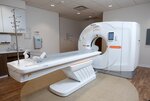






Broken is:
Welcome to this first column in a mini-series on this MAXI topic.
After that dreadful ER experience with my son, I have been on a mission to explore and shed light on emergency care problems locally.
What I now understand is that emergency care is but a piece of and reflects our bigger broken healthcare system. The issues here in Thurston County sadly plague many communities. Experiencing a different quality of care at Overlake Medical Center in Bellevue offers hope for something better being possible in these times and in our community. New ways to offer care are being instituted locally, columns August 22, December 12 and December 18. In time we will know if these innovations offer definitive solutions or are at least Band-Aides, for now.
The overall healthcare mess is reminiscent of the story I wrote about the prescription opiate crisis discovered and resolved by a hero in our midst, Gary Franklin, M.D. WA Department of Labor and Industries (Part 1 and Part 2).
It was solved by
1 - identifying what was happening (disabled young men’s widows were applying for spousal death benefits as their husbands were dying, from opiates as it turned out), 2 - how it happened, and 3 - by taking steps to stop and solve the deadly problem. It took an intensive COLLABORATIVE EFFORT between the medical profession, state departments, and legislatures (nationwide) to change. No magic bullets. It took TIME, dogged persistence (thank you, Dr. Franklin and team!) and LEGISLATION.
It will take all of that and more to fix our broken healthcare system, which is substantially BIGGER and MORE COMPLICATED.
I am no expert but here is what I observed.
It all started in the years I practiced medicine (1976-2020). There were three things I witnessed in the early years that were memorable and impactful:
1 - Circa 1979 - my Infectious Disease preceptor (i.e. teacher) was actively recruiting colleagues to sell their practices to the hospital where I trained (now called Providence St. Vincent Medical Center), sincerely believing this would improve healthcare and our practices. He was sold on the belief that turning over the day-to-day running of our offices to business administrators, would free us of that ‘burden.’ I felt sickened by both this concept and his religious-like passion, which won out as we know it now.
I heard last week in a house legislative hearing that currently 50% of WA physicians are employed by corporate healthcare systems. More on this later in the series.
2 - Towards the end of my 1980-83 residency, I was introduced to St. Vincent’s new CEO, an MBA-trained administrator, who in his formal business suit and manner, seemed nothing at all like the Sisters (nuns who were professional chaplains, nurses, and leaders) who previously sat in those administrators’ chairs.
3 - Circa 1984-90, my early years in private practice, I felt similarly ill when health insurance contracts became increasingly more complicated to assess, navigate and eventually bill. Issues 1 and 2 were nails in the coffin of the private practice of medicine.
There are many who ‘get’ a lot more than me about the nature of our healthcare problems. Stay tuned as I intend to share what I learn from them in future entries for this series.
Currently, 90% of hospital care in our state is in corporate-run health systems. Overlake Medical Center is not one of these, by the way.
This is our state capital, and the legislature is in session right here and right now. I wondered… What are the healthcare committees up to? So, I attended one hearing each in the House and Senate and learned… They are up to A LOT!
I listened to a whole array of dedicated, passionate, highly intelligent, and educated professionals who are working hard with the intent of healing and bringing justice to our healthcare system. I heard policy writers, leaders from organizations researching healthcare systems, lawyers and their aides writing legislation, and legislators themselves speak on behalf of (or against) proposed legislation. Sitting in those hearings, someone with minimal prior exposure to law-making, was brilliant, inspiring, and hopeful.
In this session of the Washington State legislature, there is legislation being introduced to address every aspect of what is broken. Enacting laws through legislation and funding agreements had a role in creating this mess and will likewise play an essential role in excavating our way out.
There are or will be no magic bullets for improving the healthcare system. The legislative process is complicated and takes time. Changing something as big as our healthcare system will as well. Such change will require a climb of many steps, one after the next, until gradually, many of the broken parts of our healthcare system can be healed.
I feel it is important for us to be informed and understand what is going on with our health and what to do about it. I also feel that in this time of brokenness, an informed and activated public will be important as we press for better healthcare. We do, after all, still live in a democratic country.
Stay tuned for what I learn, meeting with policy researchers, attorneys, writers, legislators, and more as I roll out this series. Join me in sharing both hopes that we have reached the darkest place in the healthcare tunnel and that we may at last be moving toward the light.
Debra L. Glasser, M.D., is a retired internal medicine physician in Olympia. Got a question for her? Write drdebra@theJOLTnews.com
6 comments on this item Please log in to comment by clicking here
AugieH
My Dad was a General Practitioner who delivered babies, did minor surgeries, took and read his own x-rays, and made house calls. My Mom was a psychiatrist on the staff of *the now defunct) Camarillo State Hospital in California. Neither would recognize today's health care environment. The pathetic descendent of the General Practitioner, the Family Practitioner, has as his or her primary purpose in health care to refer the patient on to a specialist.
Tuesday, January 30 Report this
JohnGear
Solving any problem or improving conditions in the face of various predicaments (structural challenges created by and inherent in complex systems) first requires accurately recognizing whether you are dealing with a problem or a predicament. Problems are discrete/finite and have recognizable solutions that are objectively correct, such as “How do we treat wastewater from urban areas so that we prevent cholera outbreaks?” Etc. Predicaments are situations where many people in many different circumstances and with vastly different goals and resources interact such that each player gets a different outcome from one system perturbation - one action may be wonderful for some, but toxic for others in other words.
Problems have solutions in fundamental sciences in other words, whereas predicaments have no solutions, and have to be dealt with and managed through the political realm.
Just as with the housing shortage, understanding the predicament we find ourselves in vis a vis the medical industrial complex first requires that we recognize that in health care, we don’t have a problem on our hands — we have a full-blown predicament that results from the complex nature of the structural challenges we face. Everyone in society is a participant in the health care predicament — even the houseless person who has no formal access to health care is a participant and can impose a great cost on everyone else as a result of this absence of care.
And the greatest challenge is at the root: recognition that we don’t have a health care system any more than we have a housing system. What we have instead are a set of individual agents acting to maximize their own goals and well-being, and we hope that as a result, “as if by an invisible hand,” we will all be made better off (housed, or healed, as the case may be). (Systems are arrangements of interacting elements so arranged as to achieve a goal.)
We can conduct a mental experiment — we can hypothesize that, if the purpose of a system is what it does (true), then in both housing and health care, what we should expect to see the overall system to operate at the most economically efficient frontier, the curve on the graph of supply and demand that maximizes the profits to be reaped by investors.
And that is exactly what we have — we have a housing system that is exquisitely balanced to find and exploit opportunities to make money, but which is also therefore exquisitely sensitive to opportunity cost and which will only build housing that clears the minimum profitability bar that the investor’s alternative investment options set. As a result, we get and we only get whatever housing can be built with high margins, and not one room more. Those of us who are well-housed use a comprehensive package of laws and regulations to ensure that our particular housing investments are protected and constantly become more valuable, even at the cost of preventing enough housing for even the people already here, much less for those to come.
So too in medicine — the system configures itself to maximize net revenue, not net health. There is not a single actor in the medical industrial complex whose financial return is tied to actual health outcomes in the sense of compensation for results (pay for outcomes rather than process).
In medicine, we have allowed the private equity investors and insurance companies to configure the system and to restrict the number of providers to stay on the curve of maximum profitability, and we get whatever health outcomes result from that, just as we get only what housing the developers and land speculators can make a profit off.
A free-market, for profit system for essential goods and services like housing and health care works great — as long as you understand that “works great” means is that all the creativity and innovation in the system is focused on progress towards the system goal (financial yield), and that anything that interferes with the system goal is considered an obstacle and routed around.
Wednesday, January 31 Report this
hptrillium
Thanks to Debra Glasser for these articles. I hope we can change our healthcare system to benefit health outcomes and not corporate profits.
Wednesday, January 31 Report this
Terrilovesanimals
I understand government involvement to a limited degree to prevent mal-practice. BUT we need individual, independent practitioners to be allowed to thrive and take care of us like in the past.
Wednesday, January 31 Report this
Callie
I'm very concerned about use of ED for primary care. I recall the Ebola case missed in a Texas ED, when a man dropped in for what I think would have been better handled in an office visit setting.
I have Kaiser, (Group Health) and a consulting nurse can often get me in to primary care next day if the nurse has helped determine that I don't need ED or Urgent Care. BTW-Kaiser Urgent Care can evaluate chest pain.
I was surprised at this news item - when one considers trauma and heart attacks as part of the mix. See below:
CMS: Americans' median ED visit lasts 162 minutes
Patients in the US spent a median time of 162 minutes at emergency departments during the 12-month period that ended in March 2023, up from 152 minutes during the same time period the previous year, according to the CMS' timely and effective care dataset. Washington, D.C. had the longest median ED visit time at 330 minutes, while North Dakota had the shortest at 107 minutes.
Full Story: Becker's Hospital Review (2/1)
Tuesday, February 6 Report this
JohnGear
Here’s a terrific video on pharmacy “benefit” managers, or PBMs, which should really be called Price-Boosting Monsters.
https://youtu.be/wmZtBW54GNI?si=KCfqEQCH7dHJhm_0
Monday, February 19 Report this